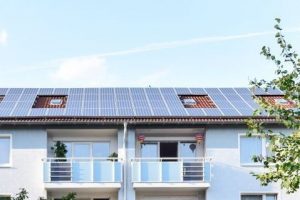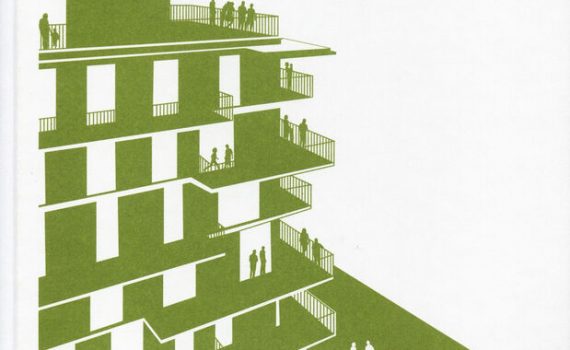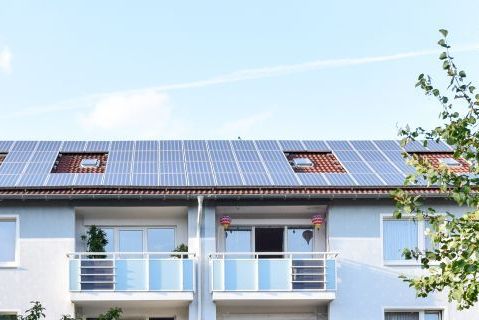 Isabella Marboe (ed.) Bauen für die Gemeinschaft in Wien Neue gemeinschaftliche Formen des Zusammenlebens Edition Detail 2021, 144 pages, de/eng, Euro 39,90
The housing projects presented in Vienna arose from the desire to develop living concepts that strengthen the sense of community and contribute to a society based on solidarity - building groups and participatory projects, neighbourhood houses, temporary or permanent social forms of living and working for marginalised groups such as the homeless and people entitled to asylum. Private flats can be downsized if there is more shared space. These housing and living models are alternatives to capitalist investor thinking. The users get involved, also in the project planning. Ulrike Schartner and Alexander Hagner from gaupenraup+/- explain the starting point and strategies of their work in an introductory interview. In two essays, Robert Temel and Isabella Marboe show the development of communal forms of building and living.
Isabella Marboe (ed.) Bauen für die Gemeinschaft in Wien Neue gemeinschaftliche Formen des Zusammenlebens Edition Detail 2021, 144 pages, de/eng, Euro 39,90
The housing projects presented in Vienna arose from the desire to develop living concepts that strengthen the sense of community and contribute to a society based on solidarity - building groups and participatory projects, neighbourhood houses, temporary or permanent social forms of living and working for marginalised groups such as the homeless and people entitled to asylum. Private flats can be downsized if there is more shared space. These housing and living models are alternatives to capitalist investor thinking. The users get involved, also in the project planning. Ulrike Schartner and Alexander Hagner from gaupenraup+/- explain the starting point and strategies of their work in an introductory interview. In two essays, Robert Temel and Isabella Marboe show the development of communal forms of building and living.
Kategorie für Blog: News Blog Austria
Animation from Jan Kamensky (2020)
 In Vienna, as a rule, no residential building may be erected without a solar system in the future. This is stipulated in an amendment to the building code, which is currently being evaluated, the red-green city government informed on Monday. Currently, such a photovoltaic obligation applies only to industrial buildings.
In Vienna, as a rule, no residential building may be erected without a solar system in the future. This is stipulated in an amendment to the building code, which is currently being evaluated, the red-green city government informed on Monday. Currently, such a photovoltaic obligation applies only to industrial buildings.
Since 1 January 2020, all new buildings and general renovations of the BIG Group have been subject to the Group-wide mandatory minimum sustainable standard. The BIG minimum standard goes beyond the legal requirements and ensures that all projects of BIG and its subsidiary ARE achieve the klimaaktiv SILVER standard in any case. The sustainable minimum standard of the Bundesimmobiliengesellschaft (BIG) is a catalogue of criteria that must already be taken into account in the planning process for buildings. This makes the implementation of 43 measures of the BIG Holistic Building Programme (HBP)* and the achievement of at least 750 klimaaktiv points mandatory for all new construction and general refurbishment projects for which a planning invention procedure will be carried out from 2020. By implementing the minimum standard, CO2 emission values are significantly reduced, climate-damaging building materials are avoided and the phase-out of fossil fuels is accelerated.
 Recently, the Austrian state of Vorarlberg published the subsidy guidelines for 2020 and 2021 for residential renovation and new construction in the private and public sectors. The climate-friendly procurement of wood and wood products from the region is anchored in these guidelines. The origin of the wood must be proven by means of the "Holz von Hier" label recently introduced in Austria or comparable certificates.
Recently, the Austrian state of Vorarlberg published the subsidy guidelines for 2020 and 2021 for residential renovation and new construction in the private and public sectors. The climate-friendly procurement of wood and wood products from the region is anchored in these guidelines. The origin of the wood must be proven by means of the "Holz von Hier" label recently introduced in Austria or comparable certificates.
The programme series plan b uses the example of Seestadt Aspern in Vienna to explain what a "circular economy" can look like in concrete terms. Seestadt is one of the largest urban development areas in Europe. By 2028, high-quality living space for more than 20,000 people and almost as many jobs will be created in several stages in the north-east of Vienna's 22nd district. The aim is to create a sustainable neighbourhood.
The call for proposals "City of the Future - Towards Plus-Energy Neighbourhoods" builds on previous experience from the research programme specific focus areas and R&D services. All stakeholders who are involved in research and development issues relating to buildings, neighbourhoods and cities and who want to tackle the new challenges of digitalisation in the construction industry, the realisation of plus-energy neighbourhoods and the development of innovative urban greening technologies can submit proposals. Around €8.3 million is available for the 7th call for proposals as part of the "City of the Future" programme. The call runs until 30 January 2020.
The Austrian parliament has implemented an emergency package to promote photovoltaics. Starting in 2020, an annual budget of 36 million euros will be available for investment subsidies for photovoltaic systems and electricity storage. https://www.solarserver.de/solar-magazin/nachrichten/aktuelles/2019/kw39/oesterreich-pv-notpaket-beschlossen.html
The jury selected nine winners this year, and seven additional commendations were awarded. 134 projects were submitted, all of which, according to the jury, "demonstrate a degree of maturity in craftsmanship that can hardly be surpassed". On 30 June they were awarded in the CUBUS Wolfurt. The "Vorarlberger Holzbaupreis 2017" was awarded to:
How people live and what mobility services they find in their surroundings determine the costs and the environmental balance of their daily journeys. Municipalities and companies can reduce housing costs with measures for sustainable mobility.
84-metre-high building in Vienna's new "Seestadt Aspern" district After around two years of development, the groundbreaking ceremony for the lighthouse HoHo project in Vienna has now taken place. By 2018, around 20,000 square metres of rental space will be created on 24 levels in a timber hybrid construction.
A film by French philosopher Philippe Simay on arte.tv In this episode, the philosopher visits the region of Vorarlberg in Austria, the international model for ecological and sustainable architecture.
More and more cargo bikes can be rented throughout Germany. For good reason: if you only need a transport bike occasionally or want to test it out in detail first, you don't need to buy one right away. For this case, cargo bike sharing systems or rental offers are particularly attractive.
"With their jointly planned residential building, the two Viennese architectural firms "Berger+Parkkinen" and "querkraft" have ventured a new interpretation of the urban block: despite high density, the broken-up ridge structure allows for small-scale development with varied open spaces." Read the article by Julia Liese from 19.08.2016 on DETAIL.de
Five prize winners can look forward to the Lower Austrian Timber Construction Prize 2016, which was awarded for the 15th time on 6.6.2016. Winery Högl, Wachau Prize winner utility building (Copyright Elmar Ludescher) "Planning is becoming more and more creative and every year there are new technical solutions. As a result, wood as a building material is gaining in importance for builders and planners every year [...]
The largest passive house development in Europe is currently being built on Mühlenweg in Vienna. The total area of the Aspanggründe "Eurogate" site covers approx. 22 ha. Six different architectural firms are planning a total of 740 apartments. In the final stage, approx. 7,000 jobs will be created there. By the end of 2008, around 25% of the planned social housing in Vienna will probably be of passive house standard [...]
The municipal council of the city of Wels has adopted a declaration on passive house construction. In it, the magistrate is instructed to strive for the energy-saving passive house standard in all new buildings and renovations of the city and municipal enterprises. The godfather for this resolution, which was passed unanimously, was apparently the city of Frankfurt a.M., which, according to current political resolutions, will in future [...]





